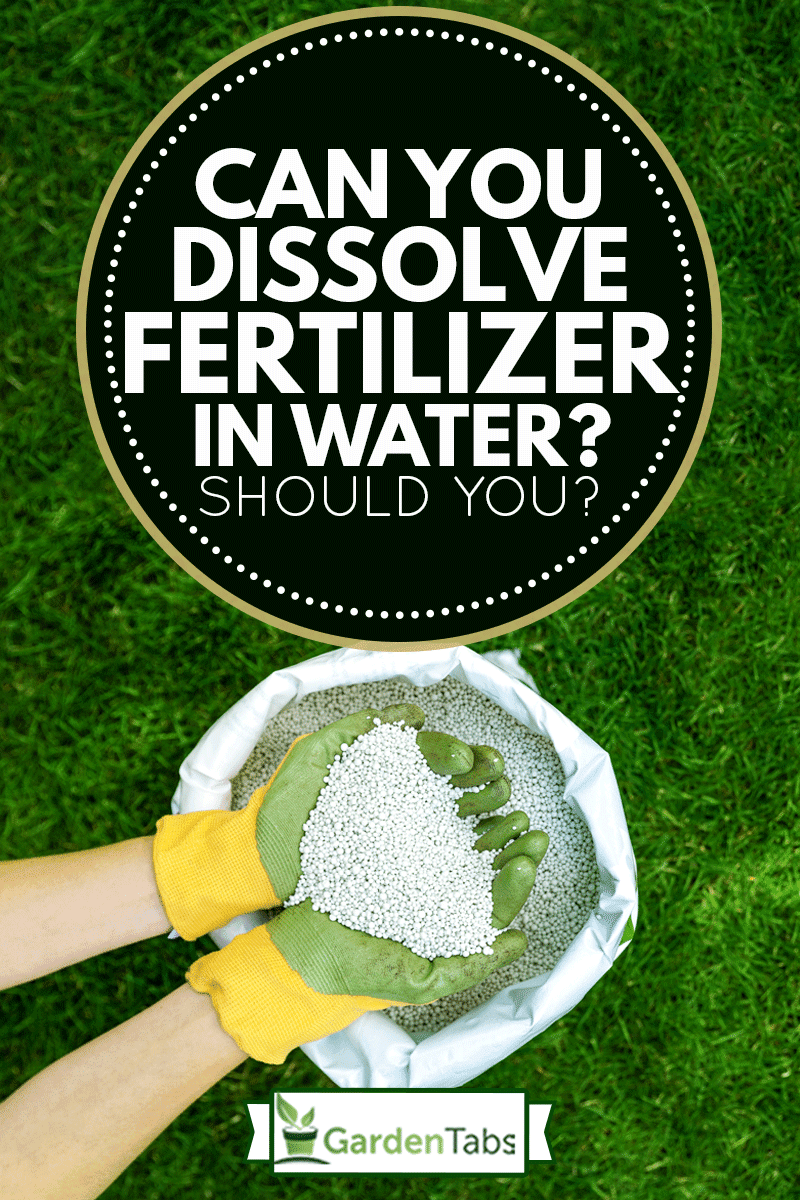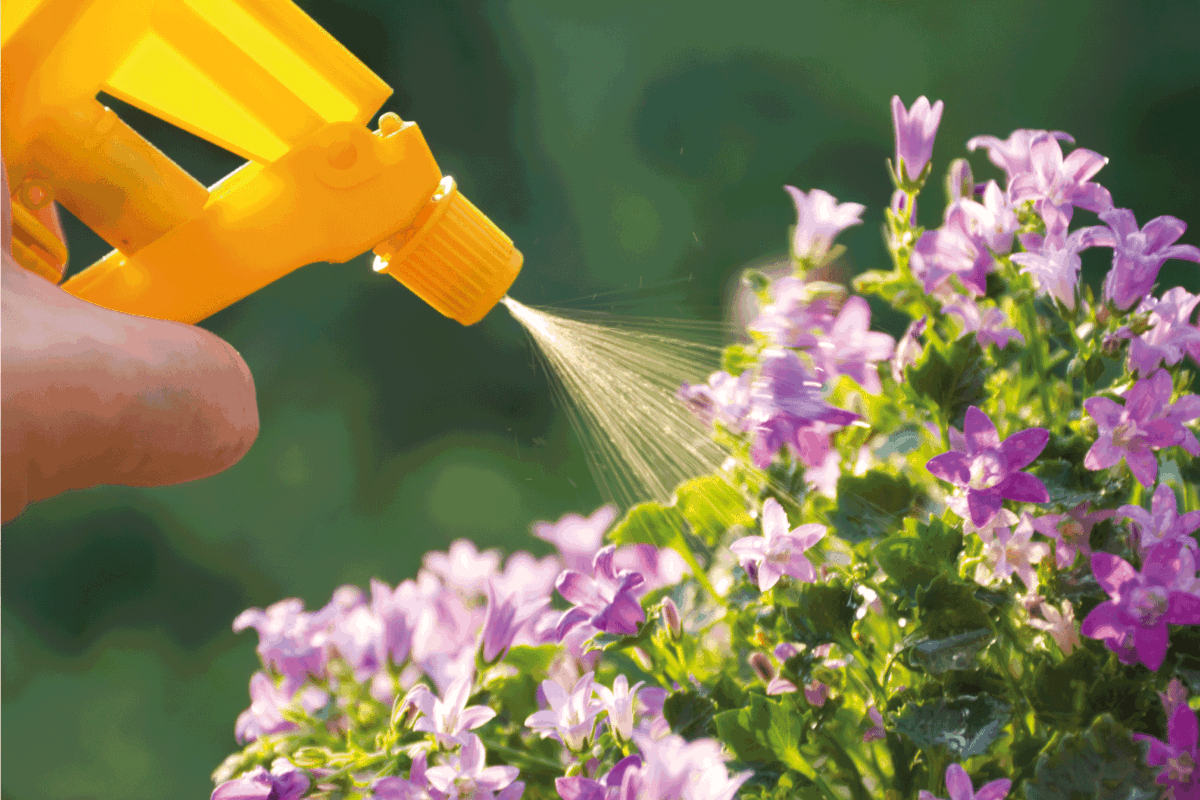Fertilizer is a key component in plant health. But maybe you're curious about a few things when it comes to fertilizing your plants. For one, can you dissolve fertilizer in water? Should you? Look no further. We have researched all about fertilizer dos and don'ts for you.
You can dissolve fertilizer in water. In fact, completely dissolving the fertilizer in water is an essential step. Almost all fertilizers are water-soluble.
Keep reading to learn more about diluting fertilizer, how to dissolve fertilizer, and how to make liquid fertilizer from urea. We will also discuss granular fertilizer.

Fertilizer Facts
It is best to choose a pre-mixed fertilizer. This is because mixing your own is not as reliable of a method. You can count on fertilizer to do its job if it has been tested and proven to work.
You must be careful if you decide to make your own fertilizer. When making your own fertilizer, you will need to blend the fertilizer elements accurately and proportionally. Choose a commercial brand that states it is intended for the same purpose you seek.
For example, tomatoes do not thrive in 20-20-20 fertilizer. However, 20-20-20 is labeled as "general-purpose" fertilizer. You should be able to find commercial fertilizer labeled for hydroponically grown tomatoes. When growing tomatoes, you want to have a potassium-rich fertilizer.
Do I have to dilute fertilizer?
Yes, you do have to dilute fertilizer. If you do not dissolve your fertilizer in water completely, it will settle to the bottom of the mixing tanks. This can be a problem because when the fertilizer is not properly mixed, your plants will not receive the full dose necessary for them to thrive.
How do you dissolve fertilizer?
When you dissolve fertilizer, you add one cup of granular fertilizer per one gallon of water. You have to stir your mixture so the fertilizer can entirely dissolve.
If your fertilizer does not seem to dissolve easily or completely, no worries. There are a few things you can do to solve that problem. To dissolve fertilizer, you can use hot water, mix it with a pump that circulates water, or mix it well with something like a paint mixing stick.
Fertilizer Ratio
When dissolving fertilizer, it is crucial that you continue to use the correct measurements. In order to figure out the fertilizer ratio, you have to divide the weight of each nutrient by the nutrient with the lowest weight.
For example, use 1.5 lb of nitrogen, 0.5 lb of phosphate, and 0.5 lb of potash (fertilizer potassium). You divide each amount of nutrient by 0.5 lb. This results in a fertilizer ratio of 3-1-1.
A fertilizer ratio refers to the amount of macronutrients in the fertilizer. The first number in the sequence is always referring to nitrogen (N), the second number is always phosphorus (P), and the third number is always potassium (K).
Click here to see this 20-20-20 fertilizer on Amazon.
How do I choose the right fertilizer?
Fertilizer comes in many shapes and sizes. Choosing a fertilizer manufactured by a company that already has a well-established good reputation is a surefire way to pick a fertilizer that you will be happy with.
As long as you choose a fertilizer made by a reputable company, you should be good to go. Fertilizer that a reliable company manufactures is more likely to result in success. It is possible to mix your own ingredients to make fertilizer, but it is a safer, more reliable option to go ahead and purchase one from a well-established company.
Click here to see this on Amazon.
How to make liquid fertilizer from urea
Urea is a form of nitrogen-rich fertilizer. It is less expensive than other types of fertilizer. Use urea if you grow crops such as corn, blueberries, or strawberries because they love acidic soils.
In order to make liquid fertilizer from urea, you will need to mix one heaping tablespoon of urea fertilizer in one gallon of water. The urea fertilizer needs to be 46-0-0.
Mixing the urea and water with the 1:1 ratio we mentioned above creates a 0.5% solution. If you want a 2% solution, you need to use four tablespoons of fertilizer.
Next, you need to use a funnel in order to get the solution into a sprayer for foliar fertilizing. Then you have to shake it well so that the granules are able to dissolve. Now your fertilizer is ready for spritzing.
What to Know About Mixing Your Own Fertilizer
- One important thing is the solubility limit for mixing your own fertilizer. There is a specific amount of fertilizer that will dissolve in water.
- If your fertilizer does not mix properly at first, you can add in hot water at about 180°F. Doing so will dissolve the fertilizer completely.
- Another way to get your fertilizer to dissolve entirely is to make use of a circulating pump. This will recirculate the fertilizer throughout the mixture so that it can dissolve.
- Potassium sulfate is not as soluble in cold water as some other solutions. It is important to use one of the methods we mentioned above, such as using hot water, to make sure the fertilizer dissolves completely.
Is liquid fertilizer better than granular fertilizer?

The answer to this question varies because it is situational. Liquids are better for a starter plant. The roots are likely to steer away from granular fertilizer if it has high levels of potassium or nitrogen.
What is right for one plant may not be right for another one. Liquid fertilizer is more evenly distributed; therefore, it yields better results. It is more consistent than granular fertilizer.
With granular fertilizer, you have to give it the extra time needed for the fertilizer to become dissolved completely. Liquid fertilizer is ready to be used immediately.
Granular fertilizer is dry. This results in a longer shelf-life. If you have granular fertilizer, you can make liquid fertilizer whenever you want.
One benefit of using granular fertilizer is that it is less expensive in bulk. The process of storing it is easier because it does not settle out the way liquid fertilizer does.
A benefit of using liquid fertilizer is that it is good for foliar feeding. This is when you should distribute your fertilizer by spraying it onto the leaves of your vegetables rather than watering fertilizer directly into the soil. The leaves of a plant absorb moisture quite well.
Liquid fertilizer should be diluted one to two cups per gallon when watering. Perhaps the most important fact to understand when comparing the two is that the same amount of nutrients are provided to the plants by either liquid or granular fertilizer.
Click here to see this liquid fertilizer on Amazon.
What is the point in foliar feeding?
The reason for foliar feeding is to supply your plant with nutrients through its leaves in addition to through the soil. Spraying the leaves of a plant does not make the plant absorb more moisture than healthy soil does, though. It is used in addition to feeding the soil rather than as a substitute.
Liquid fertilizers are used as a spray for foliar feeding. Be sure to strain yours thoroughly so that the nozzle of the spray bottle does not get blocked.
Seaweed extract is a commercial product that will not clog the nozzle of your spray bottle. This is important to know because seaweed stimulates growth. It also makes plants less likely to succumb to pests and diseases.
What happens if fertilizer gets into the water?

If fertilizer gets into water that you were getting ready to mix into your water, you should dispose of it. This is because the ratio will be wrong if you do not know exactly how much fertilizer went into the water.
Surface water is water that gathers on the surface of the ground or the top layer of a body of water. When a commercial fertilizer goes into surface water, it releases nutrients which then stimulate the growth of microorganisms. If microorganisms are able to grow, the content of dissolved oxygen in the water will significantly decrease.
You need oxygen to be dissolved in water. When oxygen has not dissolved in surface water, then fish and other underwater species will suffocate. This is not good for the water quality and smells bad too.
In Closing
It is essential that you dissolve your fertilizer in water. Using the correct ratio of ingredients for your fertilizer mixture is imperative. The type of fertilizer you need is dependent on what you are growing. Choosing a pre-mixed fertilizer from a reliable brand is your best bet.
Before you go, check out the following links related to fertilizer:
How Long Does Fertilizer Last In Soil?
7 Of The Best Fertilizers For Holly Bushes [And How To Use It]



